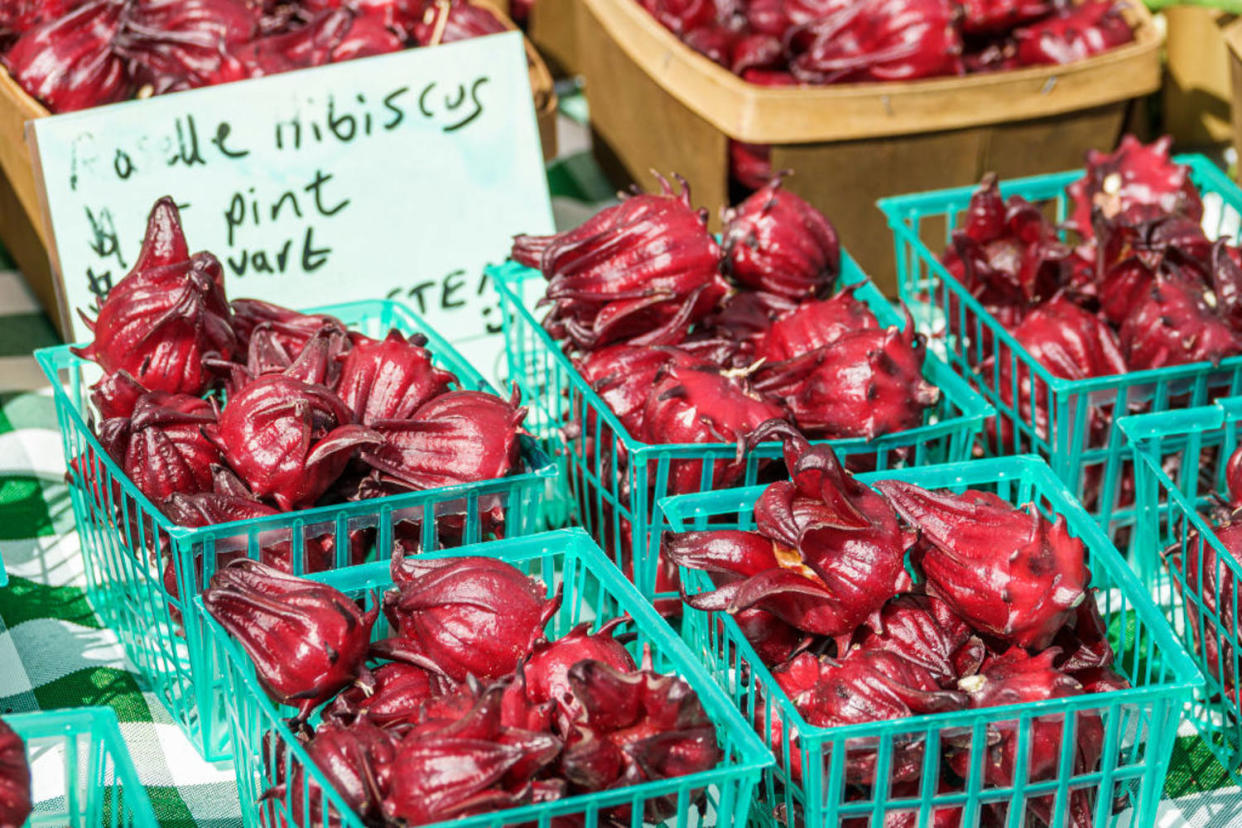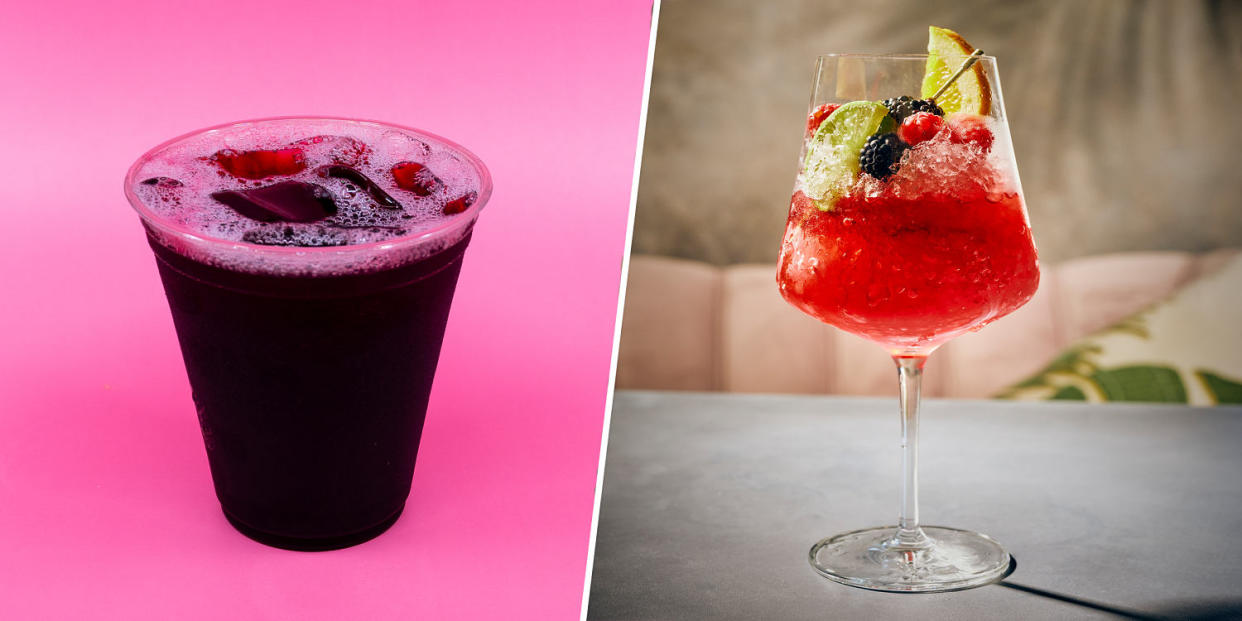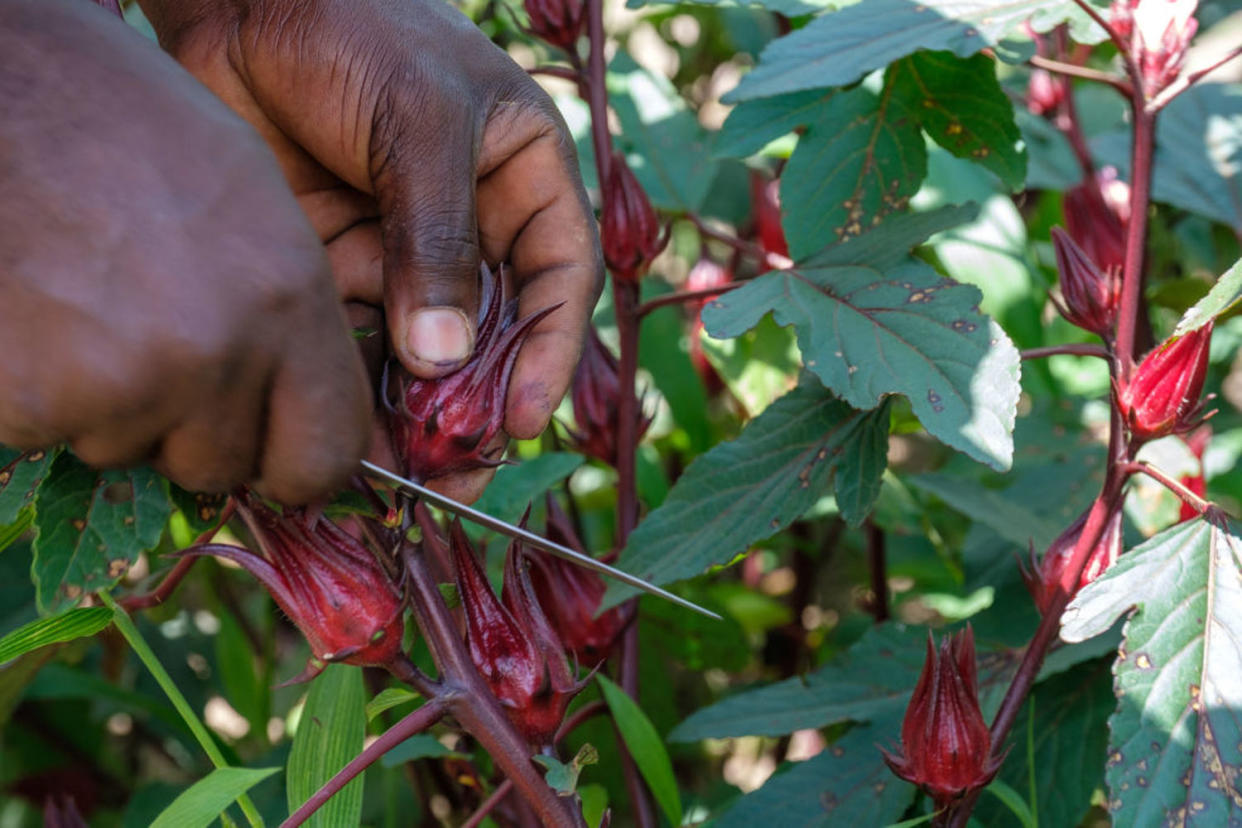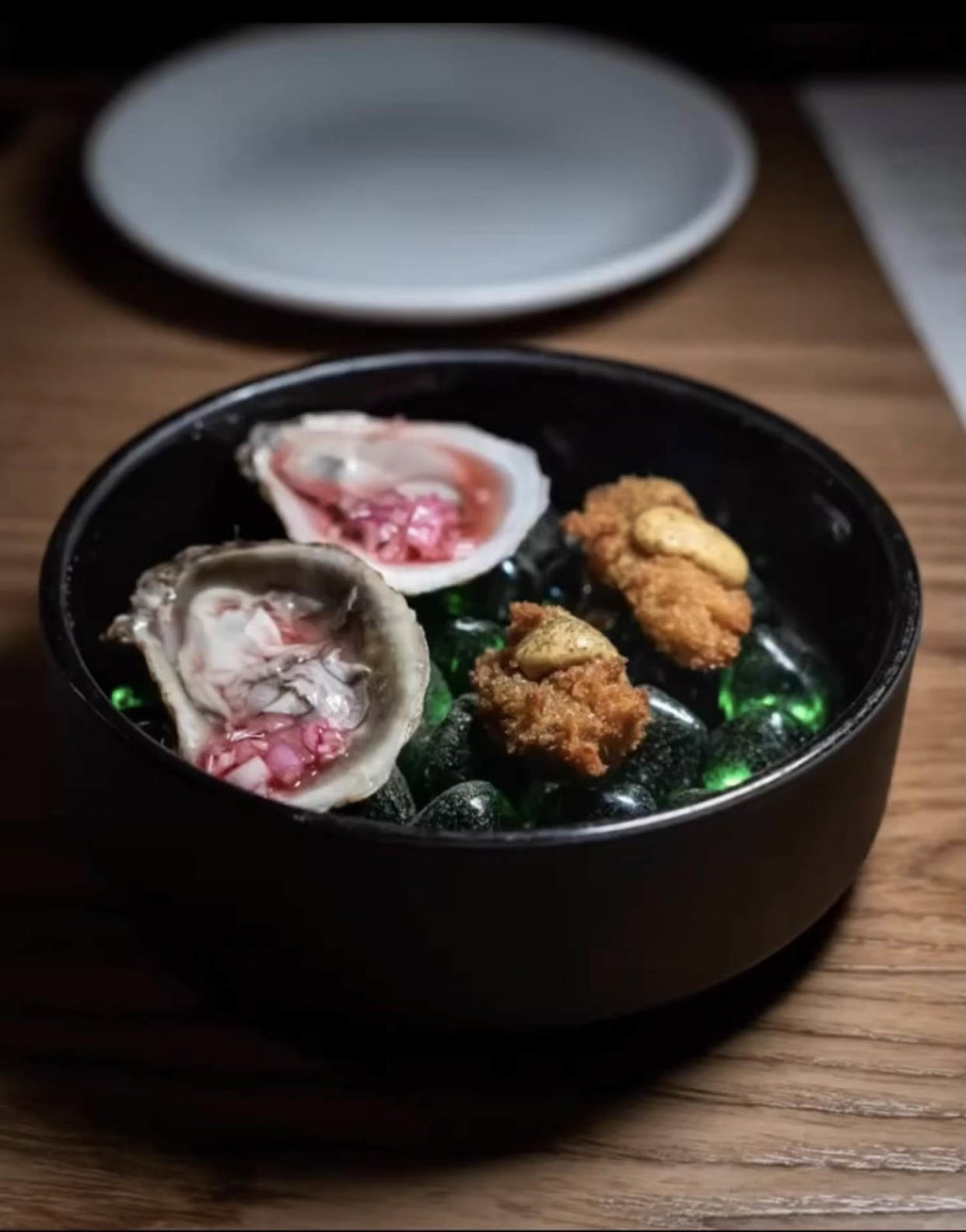Sorrel: The flavorful drink steeped in tradition and symbolism
“The first time I saw sorrel, it was Jamaica, Queens — I was 15 or 16 years old,” chef JJ Johnson tells TODAY.com, reminiscing on an afternoon spent with his cousin. “We were getting a beef patty and coco bread and, of course, I see a red drink and I’m like, ‘Oh, what’s this drink?’ and she’s like, ‘Oh that’s sorrel, you gotta get one.’ So I got one and I fell in love with it.’”
These days, the James Beard Award-winning chef serves the drink — made by brewing the calyx of the tropical flower roselle (also known as hibiscus sabdariffa) with spices and, sometimes, rum — at his popular rice bowl restaurant Fieldtrip.
Johnson’s is non-alcoholic, sweetened with palm sugar and spiced with cinnamon. He says the drink initially appeared on the menu as a special, but became a mainstay when it garnered a distinct following.
“There’s people that come to Fieldtrip just for our sorrel,” he says. “They get two, three glasses or they’ll ask for a quart container.”
The bright red drink is known by many names throughout the world: bissap, rosella, kerkede and sorrel, to name a few. Latin singer Maluma has even hat-tipped the beverage in his track “Agua de Jamaica,” showing its worldwide appeal.
But, to Black American culinary greats getting ready to celebrate Juneteenth, sorrel holds a deep significance due to its history and the centuries-long journey of the people who make it.

Why red and Juneteenth are closely linked
On June 19, 1865, federal troops arrived in Galveston, Texas, and announced enslaved people were free. This was two and a half years after Abraham Lincoln signed the Emancipation Proclamation on January 1, 1863, but at that moment, the end of slavery became official nationwide.
In June 1883, the Galveston Daily News reported on the 18th annual Emancipation Day — what would today be considered Juneteenth — celebrations across Texas.
According to the periodical, that year’s festivities featured parades, picnics, barbecues and more across multiple cities. The city of Dallas had a procession consisting of “red-sashed horsemen,” carriages with orators, eight floats representing “familiar farm scenes” and more. In San Antonio, the fete included watermelon — a sign of a growing tradition. The paper reported there were 23 wagons filled with the fruit, all of which was quickly devoured on site.
By 1933, the Dallas Morning News wrote that “Watermelon, barbecue and red lemonade” was “consumed in quantity” at Juneteenth celebrations.
Culinary historian Adrian Miller wrote about the phenomenon in “Soul Food: The Surprising Story of an American Cuisine, One Plate at a Time,” denoting red drinks as “liquid soul.”
“In the rural South, the very best food was showcased at Emancipation celebrations, holiday events, and black church gatherings,” Miller wrote. “Such good times called for fried chicken, fried fish, cakes, sweet potato pies, red drinks, and watermelon.”

Crimson food and drink like barbecue, red beans and rice, Waco’s Big Red and others have become entrenched in Juneteenth celebrations — some believe the color acts as a symbol of the blood shed during slavery.
Sorrel itself came to the Americas on the Middle Passage, where hibiscus seeds were brought to the U.S. by the enslaved, keeping a piece of their homeland alive on foreign soil.
“The practice of eating red foods—red cake, barbecue, punch and fruit—may owe its existence to the enslaved Yoruba and Kongo brought to Texas in the 19th century,” culinary historian and author Michael Twitty wrote on his blog Afroculinaria, adding that Afro-Texans have historically had a rich food culture. “For both of these cultures the color red is the embodiment of spiritual power and transformation.”
As these traditions spread, news of Juneteenth watermelons and joy landed on the pages of papers like The Parsons Daily Sun in Kansas, Chicago’s Daily Tribune and outlets as far as North Dakota’s Bismarck Tribune.

Beyond the beverage
“The first memory that I distinctly remember is the smell of the ginger that she would steep with the sorrel itself,” New York-based private chef Brittney “Stikxz” Williams tells TODAY.com of her mother, who hails from Jamaica.
“It was usually like a seven-day process to make this drink, so it was always waiting for that anticipation of when we could actually have the finished product,” she says. “But that smell of the sorrel and the ginger itself was just mesmerizing.”
Stikxz, who is currently appearing in Food Network’s “Ciao House,” says she makes sorrel a year-round feature in many of her dishes, and not only in drink form.
“A lot of what I do is to tell a new narration of what Jamaican cuisine is, and that’s really refining and fine tuning a lot of the ingredients that are used such as sorrel,” Stikxz says.
Some of her tantalizing dishes include a hibiscus mignonette and fried oyster with an ackee remoulade, and sorrel granita with bruleed pineapple and a shot of dark rum as a palate cleanser.
While she loves to innovate, Stikxz plans on keeping it traditional when it comes to her Juneteenth spread.
“Oh, I throw barbecues, man,” she says. “We’re stepping out and we’re lighting that grill as soon as possible. It’s a celebration of liberation, right? And the way Black people celebrate is truly through food.”

Why we celebrate
This year marks the 159th anniversary of Juneteenth. Still, it only became a federal holiday three years ago on June 17, 2021, when the Juneteenth National Independence Day Act was signed into law.
“A lot of the things that we’re learning over the last five years is history that we should have been taught 25 years ago, right?” Johnson says, adding that he encourages his friends — Black and non-black — to celebrate the idea of freedom.
“You should be having a cookout in your backyard,” he says. “You should be cooking red food, right? You should be educating kids and your family, right? Because it is an American holiday.”
For those who continue their culinary careers all year long, the holiday’s ideals are considered an everyday blessing.
“Part of the reason that there’s never been a standardized version of this beverage is every island had a different version based not just on the enslaved Africans, but the influence of the indentured servants who they lived alongside,” Jackie Summers, owner of Sorel Liqueur, tells TODAY.com.
It’s true: Sorrel has many variations in the Caribbean, including Jamaica’s version with ginger and five spice, both flavors likely brought to the island by Chinese indentured servants. Trinidad and Tobago’s versions commonly contain clove, nutmeg and cinnamon, owing to the influx of East Indian migrants.
“The other real reason that there was never a standard version of this is because the people who were making it for centuries weren’t allowed to read or write — there were no recipes,” Summers says. “If you didn’t watch your grandparents make this, it gets lost to history.”
Both of Summers’ grandparents came from the Caribbean; his father’s parents from St. Kitts and Nevis and his mother’s parents from Barbados. He says he owes his knowledge of the drink to them.
First founded in 2012 in Summers’ kitchen, the recipe for Sorel — a shelf stable sorrel-based liquor — has made it quite far.
“I was making a version of this in my kitchen for friends and families for the sake of parties and barbecues,” he says of how the business got started.
The botanical spirit has been found quenching the thirst of diners at Walt Disney World and has landed on the menu of the highly rated New York eatery Tatiana by Kwame Onwuachi. This meteoric rise is not lost on him.
“There wasn’t any precedent for the enslaved people in this country to believe anything was ever going to get better,” Summers says. “Things got better because we set precedent.”
For Summers, and for chefs like Johnson and Stikxz, using sorrel is a way to ground their culinary work in the past, the present and what’s to come.
“It feels like I’m doing my lineage proud because if we can’t tell our stories or honor the past, how can we see or celebrate our future?” Stikxz says. “It really helps me to pay tribute to all those that came before me that truly nurtured these ingredients from start to finish and, as a chef, that’s what you want to do. You want to be able to pay respect to what’s given to you.”
“In all of this, our spirits were not crushed,” Summers says. “In all of this, we sang, we danced, we created in all of this, hundreds of years of trying to get out from underneath the thumb of systemic oppression. We feel good about us, and I think that that is as worth celebrating as the freedom.”
This article was originally published on TODAY.com
